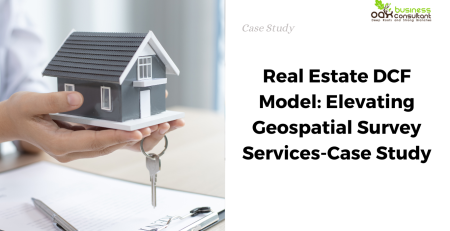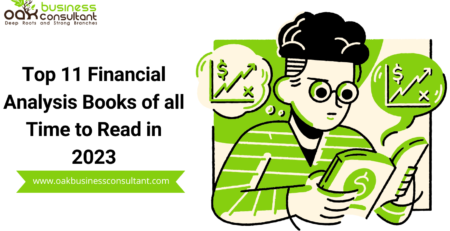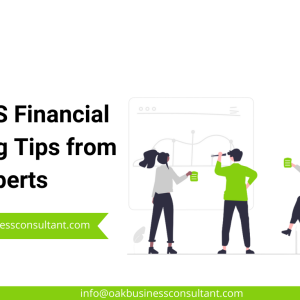How to Make the Most of Your Budgeting Software b
How to Make the Most of Your Budgeting Software
Keeping track of your finances can be daunting in today’s fast-paced world. With so many expenses to consider, it’s easy to feel overwhelmed and unsure where to start. That’s where financial budgeting software comes in. This software helps you manage your money more effectively by providing tools to set budgets, track expenses, and make financial decisions.
In this article, we’ll explore the various features of financial budgeting software and how to make the most of them. We’ll discuss different types of financial budget software, including personal financial budgeting software and budget development financial software systems. In addition, we’ll also look at the different financial budgeting tools available and how to use them to your advantage.
Let’s start by discussing the importance of setting budgets and how financial budgeting software can help you do this. But before that, of course, we must know what the most common features that budgeting software should have are. For example, expense tracking, income tracking, categorization of transactions, etc. And what about the advanced features like forecasting and how they can aid financial decisions?
By the end of this article, you’ll be able to make more informed financial decisions and gain greater control over your finances. So, whether you’re a small business owner, a freelancer, or just someone trying to keep their finances in order, this article is for you.
Budgeting Software and the Importance of Setting Budgets
As a business owner, having a budget is essential for success. Setting realistic budgets and tracking spending helps ensure your business doesn’t suffer from financial mismanagement. But budgeting software can help make things even easier. Let’s explore why budgeting software products are so important and how they can help you save money.
What Is Budgeting Software?
Budgeting software is an application that tracks income and expenses to create accurate budgets. This type of software is often used by businesses of all sizes to manage their finances and ensure they remain on track with their goals. The right budgeting software product can help streamline the entire process, making it more efficient and cost-effective.
The Benefits of Budgeting Software Products
There are many benefits to using budgeting software products, including:

1. Accurate Tracking of Income & Expenses
For business owners, tracking income and expenses can be one of the most challenging tasks. Thankfully, budgeting software products have made it easier to accurately track income and expenses while freeing up time to focus on other essential aspects of running a business. But what features of budgeting software make this possible? Let’s explore how budgeting software products help business owners track income and expenses accurately.
Features for Accurate Tracking
Budgeting software products come with various features that make accurate tracking of income and expenses possible. These include:
Bank reconciliation tools. They allow users to easily connect their bank accounts to the program for automatic updates on financial transactions.
Automated categorization. This allows users to assign categories to transactions based on existing rules automatically.
And tax forecasting. This helps users better understand the potential tax implications of their financial decisions.
So, when using budgeting software products, it is important to ensure you take full advantage of all the available features. For instance, take time to set up rules for automated categorization so your budget can be as accurate as possible. Also, regularly use the tax forecasting feature to anticipate potential liabilities or opportunities. These opportunities may arise from your financial decisions. Finally, don’t forget to reconcile your bank accounts frequently to ensure accuracy in your budgeting process.
In short, when it comes to accurately tracking your income and expenses, Budgeting software products are excellent. By taking full advantage of all the features, such as bank reconciliation tools, automated categorization, and tax forecasting, business owners can save time and energy while ensuring accuracy in their budgets.
2. Streamlining Processes with Budgeting Software Products
If you’re a business owner, you know how difficult it can be to manage multiple processes simultaneously. That’s where budgeting software products come in. These products are designed to streamline different processes and help business owners save time, money, and energy. But what features make budgeting software products so effective? And what specific processes can you streamline by using them? Let’s take a look.
Features of Budgeting Software Products that Ensure Streamlining of the Processes
Budgeting software products come with various features specifically designed for streamlining the processes associated with running a business. Here are just some of the features that budgeting software products offer:
• Automated forecasting
Automated forecasting helps reduce manual errors and allows businesses to predict their short-term and long-term financial goals accurately. This helps business owners make better decisions when planning out their finances.
• Data visualization
Data visualization is key when it comes to an understanding your finances in an easy-to-understand way. By visualizing data, businesses can see patterns in their spending habits and identify areas where they can cut back on costs or increase their revenues.
• Comprehensive reporting
Comprehensive reporting provides business owners with detailed reports on their financial performance over time, allowing them to assess their progress toward achieving their goals and make informed decisions about managing their resources.
• Integration with other software systems
Many budgeting software products integrate with other software systems, such as accounting or payroll systems, making it easier for businesses to track all their data in one place. This reduces manual errors and helps ensure accuracy across all business departments.
Processes You Can Streamline With Budgeting Software Products
Budgeting software products can help businesses streamline many different processes related to managing finances, including:
• Cash flow Management
By automating cash flow management tasks such as invoicing and payments, businesses can save time and money while ensuring accuracy across all departments.
• Budget Tracking (obviously)
Tracking budgets is essential for any successful business, as it allows businesses to stay on top of their spending habits and identify areas where they could be making better use of resources or cutting back on expenses.
• Tax Compliance
Keeping up with tax laws is essential for any successful business. Budgeting software products make this process easier by providing comprehensive reports on taxes owed throughout the year and helping businesses stay up-to-date with changes in tax laws.
• Financial Management
Budgeting software is essential for financial management. It allows you to quickly and easily see where your money is going and set realistic goals for the future of your business. You can view all your expenses, income, investments, and debt in one comprehensive dashboard that updates in real-time as new data becomes available. This helps you make informed decisions based on accurate information instead of relying on guesswork or outdated reports. Plus, these programs come with helpful features such as automated alerts when spending exceeds predetermined thresholds or when bills are due soon.
• Optimizing Inventory Management
Budgeting programs also make inventory management more efficient by providing detailed insights into the supply chain process. With this information, you can better forecast customer demand and adjust production levels accordingly. In addition, budgeting software will allow you to track stock levels in real time so that you can order items before they run out or adjust prices if supplies get too low. This helps you avoid costly backorders or lost sales due to inventory shortages.
• Improving Human Resources Management
Lastly, budgeting software can also be used for human resources management by helping you manage payrolls and employee benefits packages more efficiently. By using these tools, you will have an easier time tracking hours worked, vacation days are taken, and other important HR information for each employee in the system. Plus, budgeting software makes it easy to generate reports regarding payroll taxes or compliance regulations without needing additional assistance from outside services like accounting firms or legal advisors.
Using budgeting software is a great way to streamline processes related to financial management, inventory control, and human resources management within your organization. These user-friendly programs provide detailed insights into every aspect of your business operations so that you can make informed decisions quickly and confidently. If you’re looking for ways to improve efficiency while ensuring accuracy in all areas of your business operations, consider investing in a quality budgeting program today.
3. Financial Analysis and Reporting Benefits on Your Budgeting Software
Did you know you can use these tools for financial analysis and reporting? Whether you’re a small business owner or a larger organization, budgeting software can provide the data you need to make intelligent financial decisions and stay on top of your finances. Let’s look at how budgeting software products are used for financial analysis and reporting.
Financial Analysis Tools
Budgeting software provides users with comprehensive financial analysis tools to help them analyze their income, expenses, debt, assets, capital, and more. With this information, users can gain valuable insight into their current financial situation and develop strategies for meeting future goals. This type of detailed data can also be used to assess the performance of investments or identify areas where savings could be made.
Financial Reporting Features
Using budgeting software products for financial reports is an efficient way to keep track of all the numbers related to your business finances. These programs have built-in features that allow users to quickly generate accurate reports on topics such as cash flow, profit & loss statements, balance sheets, forecasted performance, and more. You can use this data to inform decision-making or provide an overview of the company’s current fiscal state. Additionally, some budgeting software products offer features specifically designed for regulatory compliance, like Sarbanes-Oxley (SOX) compliance.
When selecting budgeting software products specifically for financial reporting and analysis, there are many features to consider, including cash flow management tools, forecasting capabilities, integrated accounting systems, cost-tracking options, customizable reports & dashboards, etc. Ultimately it will depend on the size of your organization and what type of analyses you plan to perform with the product. With so many options available, you must select a product that meets your specific needs while providing value for money. Investing in budgeting software can help improve the accuracy and efficiency of your financial operations—resulting in better decision-making and, ultimately, more profits for your business.
4. Automated Alerts Can Help You Manage Your Business Better
Staying on top of your budget and finances is important when managing a business. But with the number of tasks that need to be done daily, it can be easy for even the most organized person to get lost in the details. That’s where automated alerts come into play. Automated alerts are a feature in budgeting software that can help you easily and accurately track your finances.
How Automated Alerts Work
When you sign up for budgeting software, you’ll likely be offered an automated alert feature. This feature sends notifications when certain thresholds are reached or exceeded. For example, when certain expenses exceed a certain amount or income falls short of expectations. These alerts can help provide peace of mind by ensuring that no detail goes unnoticed or unaddressed. With these alerts, you won’t have to worry about missing an important deadline or forgetting an important task. Instead, you will be notified as soon as something needs your attention.
The benefits of automated alerts extend beyond just peace of mind. They also save time and energy. Instead of manually checking your finances every day or week, the automated alert system does all the work for you. So you don’t have to spend hours tracking down all the details yourself. Additionally, since these systems are fully automated, they are more reliable and consistent than manual methods. With manual methods, there is always a possibility that something could slip through the cracks.
In summary, automated alerts can provide invaluable assistance in managing your business better. These alerts provide peace of mind and time-saving efficiency by sending notifications when certain thresholds are exceeded or reached. This allows you to focus on more important matters while staying on top of your finances. If you haven’t already taken advantage of this helpful feature in budgeting software programs, now is the time.
With that said, we know all about the importance and benefits of budgeting software products. But what about making the most of them? Here is your step-by-step guide to making the most of your budgeting software.
Your Step-by-Step Guide to Making the Most of Your Budgeting Software

Step 1 – Input Your Income and Expenses
If you’re like most business owners, you probably have a lot of questions when it comes to budgeting and finances. Where do I start? What expenses should I track? How do I input my income and expenses into the budgeting software? Don’t worry, we’re here to help.
1. First, you’ll want to create a list of all your income sources. This can include your salary, investments, interest, and other forms of revenue. Once you have your list of income sources, you can start inputting them into the budgeting software.
2. Next, you’ll want to create a list of all your expenses. This can include rent, utilities, office supplies, marketing costs, etc. Once you have your list of expenses, you can start inputting them into the budgeting software.
3. Once you have all your income and expenses entered into the budgeting software, you’ll see exactly where your money is going each month. This can help you make informed decisions about where to cut costs or how to increase revenue.
4. Finally, you’ll want to set financial goals for yourself and your business. Do you want to save up for a new office space? Do you want to grow your revenue by 10% this year? Whatever your goals may be, budgeting software can help you track your progress and ensure you’re on track to reach your goals.
This includes your salary, bonuses, investments, other income sources, bills, groceries, entertainment, and other expenses. This will give you a clear picture of your financial situation and help you identify areas where you can cut back on spending.
Step 2: Set up Categories for Tracking Spending
The most important step when setting up budgeting software is getting your categories set up. Once you have them set up, you can start tracking your spending and developing a comprehensive financial picture of your business. To get started, here are some of the most common categories that businesses use when they are tracking their spending:
- Office Supplies – This category covers anything used in the office, such as paper, pens, printer ink, etc
- Marketing – This category includes any costs associated with marketing initiatives, such as advertising campaigns or website hosting fees.
- Travel – If you take business trips or otherwise need to travel for work-related reasons, this category will help you track those costs.
- Payroll – Use this category to track all of your employee salaries and benefits expenses.
- Utilities – Any utilities necessary for operating your business should be tracked in this category.
Once you have created these categories, you can add more depending on what type of business you run and what types of expenses are necessary for operations. For example, if you own a retail shop, you need an additional category for inventory purchases. Additionally, shipping costs should be tracked in their category if you own an online store.
Don’t Forget to Create Subcategories
Once you have established the main categories needed for your budgeting software system, it’s time to create subcategories within each one. So that they are easier to manage and track accurately. For example, if “Marketing” is one of your main categories, then it would be useful to create subcategories, such as “Advertising” and “Social Media”. So that you can track spending regarding those areas from each other. The same principle applies to all other main categories. Breaking them into smaller subcategories will make it much simpler to keep track of the money you spend in each area.
Setting up categories in budgeting software will help ensure that you track all spending accurately. This way, nothing slips through the cracks. So don’t hesitate – to start setting up those budgeting software categories.
Step 3 – Set Financial Goals
The third step in setting financial goals is looking closely at your current financial situation. This means analyzing your income, expenses, debts, investments, and other factors affecting your financial health. Once you have an accurate financial overview of where you stand, you can start setting achievable goals.
Create Realistic Goals
When creating financial goals for yourself using budgeting software, it’s important to make sure they are realistic and attainable. You want to ensure that your budget reflects what is possible for you given your current situation. This will help ensure that your goals won’t be overly ambitious—and thus more likely to fail—or too easy that they won’t provide any real challenge or progress toward achieving better financial health.
Track Your Progress
Finally, when setting financial goals with budgeting software, it’s important to track and monitor your progress over time. You should regularly update the data in the software to accurately reflect where you are financially compared to where you were before and how close (or far) away you are from meeting your goals. This will help keep you motivated and identify any areas of concern early on so that corrections can be made before they become major issues.
By taking an honest look at where you currently stand financially, creating realistic goals based on this information, and tracking progress over time, budgeting software can help lead you toward true fiscal success. Whether saving for retirement or paying off debt, budgeting software makes it easier to take control of your finances and reach all of your money-related ambitions.
Step 4 – Master the Basics to Optimize Your Business Performance
The fourth step with budgeting software is familiarizing yourself with the basics. Most software will provide a dashboard that gives you a high-level overview of your financials, such as income and expenses. This helps you keep track of your cash flow to ensure it’s always positive. The dashboard also serves as an excellent reminder when it comes time to pay bills or taxes.
Once you’ve mastered the basics, take advantage of the advanced features available through most budgeting software programs. These include setting spending limits on certain categories (e.g., travel) or creating custom reports based on specific criteria (e.g., monthly sales). With these features, you can gain insights into where your money is going and adjust accordingly if necessary. For instance, if you notice too much money being spent on marketing, then maybe it’s time to reevaluate your strategy or allocate funds elsewhere.
Another great feature to look out for in budgeting software is the ability to forecast future expenses or income based on current trends or assumptions. This allows business owners to plan ahead and avoid any nasty surprises down the road due to unexpected financial issues. It also ensures that your data is always up-to-date so you can make informed decisions about how best to invest resources for maximum return on investment (ROI).
It’s important to familiarize yourself with any program’s basic and advanced features before getting started to get the most out of it. By taking advantage of all that budgeting software offers, business owners can optimize their performance and save time by streamlining their financial processes. With careful planning and analysis using budgeting software, any business owner should be able to reach their financial goals quickly and efficiently.
Step 5 – Review & Adjust
If you’ve been using budgeting software to manage your business finances, congratulations! You’re already on the right track. But there is one more critical step to make sure you get the most out of your budgeting software: review and adjust your budget. Here’s why this is so important, as well as a few tips to make it easier.
The simple answer is that businesses are always changing, and your budget needs to keep up with those shifts to remain effective. Reviewing and analyzing your spending habits helps you identify areas where you can reduce costs or better allocate. And which expenses should you track closely? It can also help you anticipate any upcoming changes in the market or new opportunities that could require additional capital investments. Essentially, it keeps you informed so that you can make intelligent decisions about allocating resources and maximizing profits.
Tips for Reviewing & Adjusting Your Budget Regularly
1. Set aside time each week/month to review your budget – Block off a specific amount of time on your calendar every week or month (depending on how often your business changes) dedicated solely to reviewing and adjusting your budget. This way, it won’t get pushed aside when other tasks arise during the day-to-day business operations.
2. Compare budget vs. actuals – Every time you review your budget, compare what was planned against what happened financially for each line item to determine whether the outcome was achieved. A clear understanding of where actuals deviate from the plan can help inform future decisions and provide insights into cost savings opportunities or areas where additional investments may be required to achieve desired results.
3. Make adjustments – Once you have reviewed the differences between the plan and actuals, make any necessary adjustments based on what has been learned from past performance or new information that has emerged since the last review session (e.g., changes in market conditions). This will ensure that future budgets are properly aligned with current objectives and are more likely to achieve desired outcomes.
Reviewing and adjusting your business’s budget regularly is essential to ensuring that it remains effective and accurate over time. By setting aside specific times each week/month for this activity, comparing planned vs. actuals, and making any necessary adjustments based on new information, you can ensure that your business stays ahead of its financial goals while maximizing profits at all times. With regular reviews and adjustments, budgeting software will become an invaluable tool for helping manage your business finances effectively.
Summing it Up!
Budgeting software is an invaluable tool for businesses, allowing them to manage their finances more accurately and efficiently. By understanding its features and familiarizing yourself with them, budgeting software can help your business reach financial objectives quickly and easily. But keeping up with budget changes should not end there – regular reviews and adjustments are key to ensuring that the budget remains effective over time. With careful monitoring of expenses and cost-saving opportunities, budgeting software will become a powerful asset in managing your business’s finances. In the long run, investing in budgeting software can be well worth the return on investment (ROI).


























